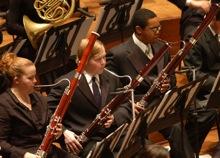The Phantom of the Legion
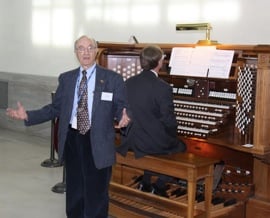
The great Ernest M. Skinner Organ in the California Palace of the Legion of Honor is turning 85 — and it's still invisible.
On a fascinating tour by the Fine Arts Museum of San Francisco on Monday, a small group was given the opportunity to witness what no ordinary museum visitor has seen since the 1924 installation of 4,526 pipes, ranging in size from half an inch to 32 feet.
When you enter the glorious Beaux-Arts building overlooking the Pacific Ocean and the Golden Gate Bridge, you are in a high-domed rotunda, next to the Rodin Gallery where the organ console resides, resplendent with mahogany, ivory, and ebony. It is an equal of such other Skinner masterpieces as those in New York's Cathedral of St. John the Divine and in the Washington Cathedral in D.C.
But, unlike those organs or — closer to home — the 9,235-pipe Ruffatti in Davies Symphony Hall or just about any other great organ, the one in the Legion has no visible pipes.
They are in the apse of the Rodin Gallery and the high-domed rotunda mentioned above. And, what you would never know without climbing up on stairs and ladders, and squeezing through four-foot openings, is that the pipes are behind a dome made of thin cloth, trompe l'oeil-painted to look like marble, allowing the sound of the organ to come through the fake wall.
With veteran organ conservator Edward Stout (in the business for more than half a century, including responsibility for Grace Cathedral), you can behold 73 each of Trumpet Profunda, Open Diapason, Gedeckt, Clarion, Orchestral Oboe, Tibia Plena, and English Horn — but only 61 Vox Humana. Of the 30-foot-long Arch Clarion there are 44.
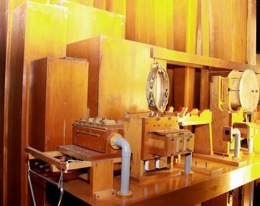
Some of the "engine" of the organ is also visible: Three high-pressure turbines with a total of 48 horsepower that provide the main wind supply for the organ's pneumatic system.
While we were in the apse, Stout shouted instructions down to organist Robert Gurney at the console to demonstrate the symphonic range of the instrument, including a battery of pneumatically operated percussion instruments, tubular chimes, and a thunder pedal used for the musical representation of storms. Gurney also played Bach, Gershwin, even the accursed — but in this case appropriate — theme from the Phantom of the Opera.
According to information from the museum:
The instrument represents the apex of Skinner's philosophical approach to organ music. The classic ideal for the instrument seeks to emphasize the elaborately intricate voices moving in opposition that characterizes baroque musical styles.In contrast, Skinner championed the romantic ideal, which reproduces the rich, full sound of an entire orchestra, capturing its bold symphonic layering of strings, horns, reeds, and percussion. The sound is meant to resonate in a nondirectional manner, creating a musical quality that seems to float, saturating the space with its presence.
Best Deal of the Week
Hands down, this (1) inaugural, (2) great, and (3) free program takes the cake: San Francisco Symphony Choral Director Ragnar Bohlin will introduce a new group he has started, the San Francisco Conservatory Chamber Choir, in a free performance of Rossini's magnificent Petite Messe Solennelle. The event will take place at the Conservatory's Caroline H. Hume Concert Hall, on Thursday, Nov. 12 at 8 p.m.
For the full Conservatory schedule, see the school's season calendar.
... And in Mill Valley
Mill Valley Philharmonic celebrates its 10th anniversary with three free concerts, Nov. 13-15. The program features winners of the orchestra's Concerto Competition: Nance Becker in Saint-Saëns' Odelette for Flute and Orchestra, Claudia Campazzo in Max Bruch's Romanze for Viola and Orchestra, Alex Dohrmann in Alexandre Guilmant's Morceau Symphonique for Trombone and Orchestra, and Rachel Dusenbury in Debussy's Premiere Rhapsodie for Clarinet and Orchestra.
Under the direction of Music Director Laurie Cohen, the concert also includes Beethoven's Symphony No. 6 in F Major, Op. 68 ("Pastoral").
The venues are Mt. Tamalpais United Methodist Church (Nov. 13), San Rafael Community Center (Nov. 14), and Mill Valley Community Center (Nov. 15).
You're on the Jury for the Van Cliburn
The Van Cliburn Foundation's second YouTube Contest for Amateur Classical Pianists is now open to the public for voting through Nov. 24. When you go to the contest Web site, you will see performance videos posted by 58 pianists, and then vote for your favorite — only once.The winner of the YouTube contest will receive automatic entry into the Sixth International Piano Competition for Outstanding Amateurs in the spring of 2011 in Fort Worth, Texas, with the application fee waived.
Purcell's Magic Minimalism
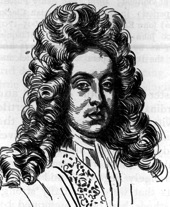
to the heart today
Just about everything about Thursday's Philharmonia Baroque Passion of Dido concert at Herbst Theatre was extraordinary. So said the audience, so says Jonathan Rhodes Lee's Classical Voice review.
Most of it could be easily expected: You knew that Nicholas McGegan's direction of the always superb orchestra and Bruce Lamott's Philharmonia Chorale would cradle and hold up to radiant light the storybook cast of Susan Graham's Dido, Cyndia Sieden's Belinda, Jill Grove's Sorceress, and William Berger's Aeneas.
What was unexpected came before the opera. McGegan programmed Dido and Aeneas for the second half of the evening, filling the first with a major choral work (Sing Unto the Lord a New Song), the Suite from Abdelazer, or The Moor's Revenge, and the Chacony in G minor.
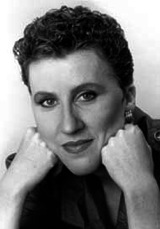
And, what this rather personal report is about, the brief, utterly simple Hear My Prayer, O Lord. That's when it happened, the unexpected beyond the big names and even bigger performances. This is when time stopped.
The opening bars — sung by the trio of Elspeth Franks, Lynda Higson, and Linda Liebschutz, accompanied by Hanneke van Proosdij on organ — came out silence, and before it became music in the conventional sense, it permeated the hall in what can be described only as aural plasma. I apologize for this inarticulate writing, but I cannot approximate the physical-spiritual experience in words.
After those blood pressure-dropping opening moments, the basses came in, Phoebe Carrai on cello, Kristin Zoernig on double bass, and David Tayler on theorbo, and the music slowly expanded, gaining momentum. I wish the opening bars could have been repeated on an endless loop.
Then, of course, at the end of the opera, Henry Purcell's minimalist magic, music-beyond-words returned with that five-minute orchestral farewell to Dido, the music trying to stop, but unable to do so, like uncontrollable weeping — reminiscent of Mahler's Ninth and, more to the point, the finale of Purcell's King Arthur.
A Purcell Quest
Still verklempt from that Philharmonia Baroque concert (item above), I went on a hunt to reconstruct/recover an old memory. It was Purcell's King Arthur used for the soundtrack of the magnificent 1978 Ariane Mnouchkin film Molière (not to be mistaken for the amusing but minor 2007 Molière) — with a sort of "overlay" of Arthur's death on Molière's.
Looked up Internet Movie Database (imdb.com) and found René Clemencic credited for the music, but that of course doesn't rule out use of the Purcell score. The way I remember, there was an electronic modification of Arthur's aria — echo chamber and pulsing. It was an extraordinary scene that used masterpiece to bolster another.
Among responses I received were several supportive statements about both the film and the soundtrack ("one of the most memorable moments in my film-going life ..."), then the encyclopedic Lisa Hirsch came up with a find: the existence of a CD. Take a look at prices: $124.95 (new) and $228.93 (used!). For CDs. True, it's in Canadian dollars, but perhaps you didn't realize that there is now parity with our neighbors to the north.
I hope to find the film at a reasonable price and the excerpt for free somewhere on YouTube.
Just One More Purcell Bit
From Chloe Veltman's Los Angeles Times interview with Nicholas McGegan and Susan Graham:
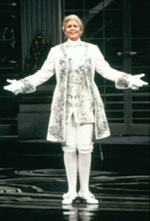
Susan Graham: I've always wanted to work with Nic. I've long been a fan of his musical aesthetic. I love this piece [Dido and Aeneas] we're doing together now.McGegan: And I always want to work with the best singers.
Graham: Unfortunately, you got me instead.
McGegan: Ha-ha. Now you get to die six times on stage over the course of two weeks.
Graham: I'm excited about that, as I don't usually get to die ... or get the guy.
McGegan: Usually you are the guy.
Graham: That's true. In Rosenkavalier, which I did recently at the Met, I am the guy.
...
On performing Dido on Purcell's 350th birthday —
McGegan: It makes me wish the composer had lived to 50 instead of dying at 34. Apparently his wife locked him out one night when he was late back from the pub. He caught a cold, and that was the end of him.
Graham: Mrs. Purcell was a serious lady.
McGegan: Yes. Mind you, I don't think Mr. Purcell was a first-time offender. He wrote about 50 drinking songs, most of which are unprintable.
...
Youth Orchestra Plays Rouse, Haydn, Elgar
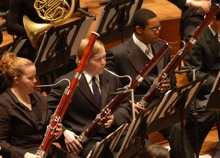
New San Francisco Symphony Youth Orchestra Music Director Donato Cabrera leads his first Youth Orchestra concert on Nov. 15 at Davies Symphony Hall. The program includes Christopher Rouse's Infernal Machine, Haydn's Symphony No. 92 in G Major ("Oxford"), and Elgar's Enigma Variations. Tickets are $12 for general seating and $33 for reserved seating.
When Simon Rattle and the Berlin Philharmonic visit San Francisco, Rattle will guest conduct the Youth Orchestra at a private rehearsal on Nov. 21.
This year there are two Youth Orchestra musicians with parents in the San Francisco Symphony: Alina Kobialka, violin (Chunming Mo Kobialka's daughter), and Marica Wyrick, cello (Peter Wyrick and Amy Hiraga's daughter).
Four former Youth Orchestra members are in the "parent organization": Cathryn Down, violin; Katie Kadarauch, viola; Amos Yang, cello; and Charles Chandler, bass.
S.F. Ballet in China
The just-concluded tour of China by the San Francisco Ballet is well chronicled and illustrated on the company's Web site.
San Francisco Ballet Conductors Charles Barker and Gary Sheldon worked with a Chinese orchestra. Music Librarian Matt Naughtin:
We met the musicians playing for our performances in Beijing. They are officially called the Symphony Orchestra of the Chinese National Opera and Dance Drama Company, and are a good group.The musicians of the orchestra are very friendly, especially a young violinist named Andy who studied in Germany and has gotten me to shake the cobwebs off my high school German and chat a bit. The managers of the orchestra have shown us much hospitality, keeping us supplied with green tea and filling up lunch plates for us from the cafeteria. I met the librarian of the orchestra. He keeps their collection (mainly Chinese operas) in the percussion storage room stacked in loose piles on some metal shelving.
I have great respect for our conductors, who have to cope with teaching the intricacies of playing for our dancers to a new orchestra in each city we visit. Most orchestras can play Swan Lake, but very few have ever played for an actual dance performance, which requires a wholly different approach to the music. The musicians have to be constantly alert to subtle changes in tempo that can be different each night. It’s difficult for the conductor to transform a symphonic orchestra into a good ballet orchestra in the short time we have to work with them, and our conductors do a splendid job.
Berkeley Opera Season
The Berkeley Opera is not only moving to a new Performing Arts Theater in El Cerrito and welcoming Mark Streshinsky, who will join Music Director Jonathan Khuner as artistic director, but the company is also planning a season that includes Mozart's Don Giovanni (Feb. 20-28), Copland's The Tender Land (April 10-18), and David Seaman's condensation of Wagner's Ring cycle, Legend of the Ring (July 31-Aug. 8).
Berkeley Opera also offers two free programs at noon in partnership with the Berkeley Public Library. On Feb. 11, the concert will feature highlights of Don Giovanni, and on April 1, excerpts from The Tender Land.
UC Alumni Concert
Music of the Night, An Evening in Song is scheduled on Nov. 15 in Berkeley's First Congregational Church. The madrigal ensemble Perfect Fifth and the University of California Alumni Chorus will join in works by Brahms, Josef Rheinberger, Richard Strauss, and some rarely performed Victorian sacred music.
Opera in Oakland
Oakland East Bay Symphony has announced the addition of soloists to the opening concert of the season on Nov. 13 at the Paramount Theatre. Joining previously announced soprano Hope Briggs and tenor Kalil Wilson will be soprano Heidi Moss, mezzo-soprano Lori Willis, tenor AJ Glueckert, baritone Zachary Gordin, baritone Brian Leerhuber, and bass-baritone Joshua Bloom. Music Director Michael Morgan will conduct the concert, with Assistant Conductor Bryan Nies taking the podium for the Funeral Music from Wagner's Siegfried.

